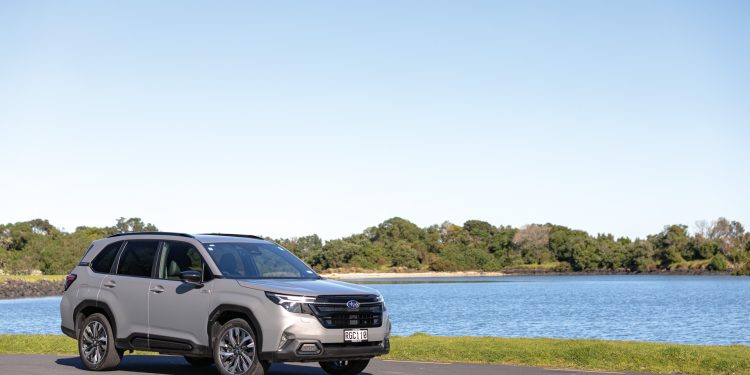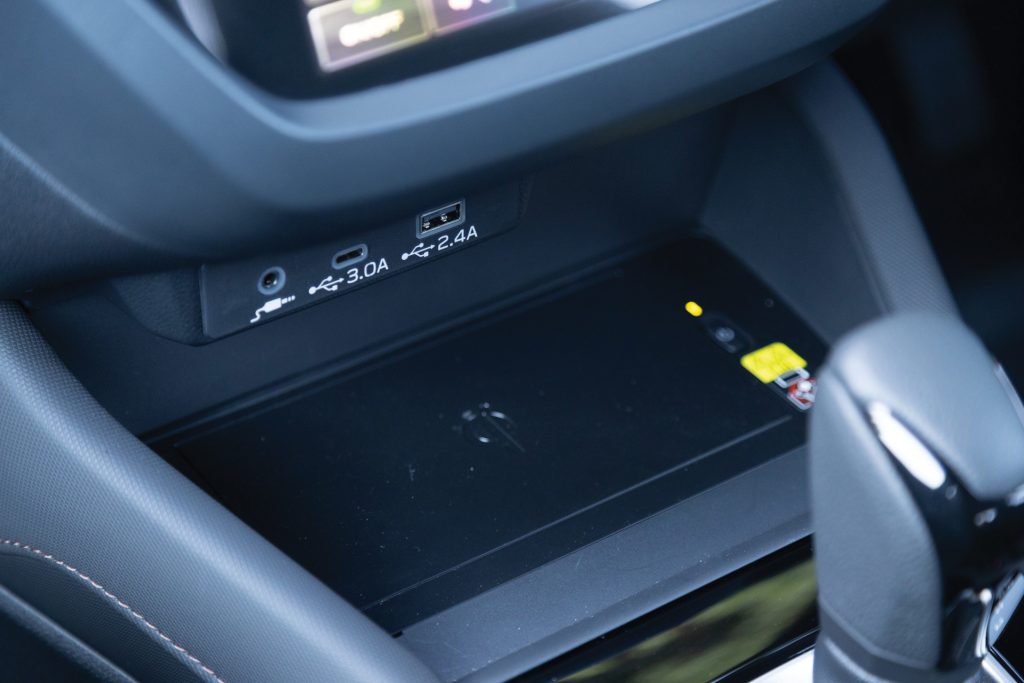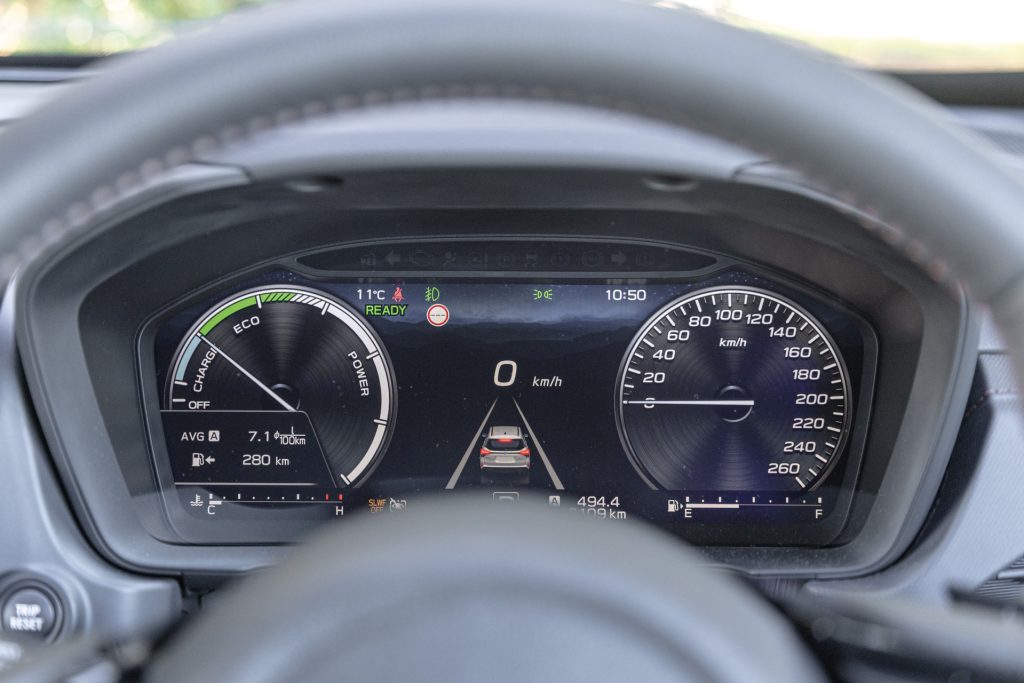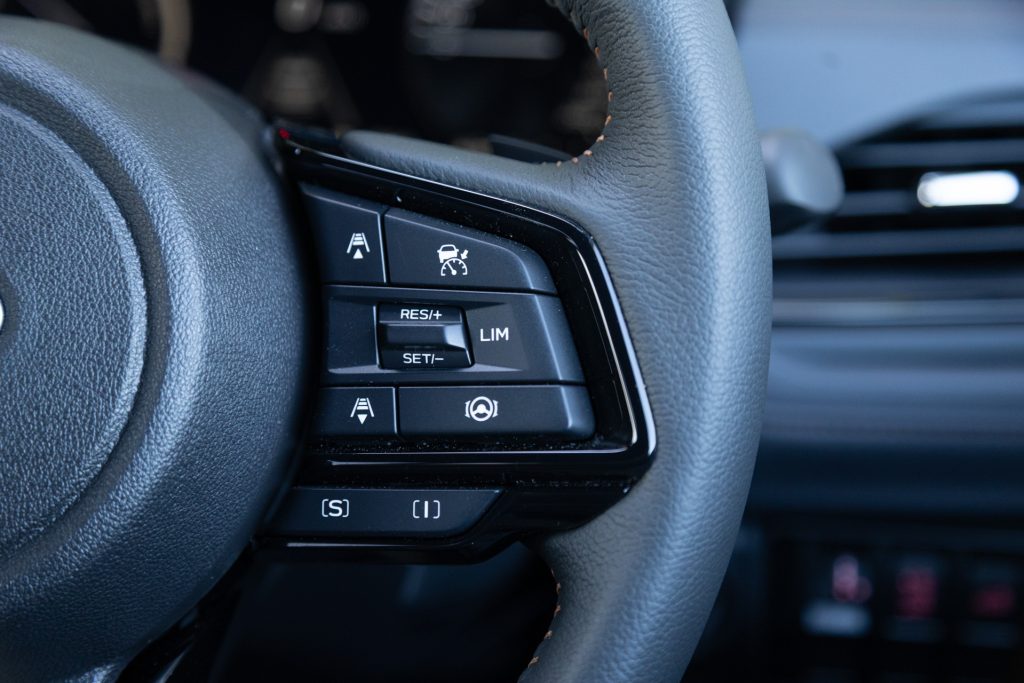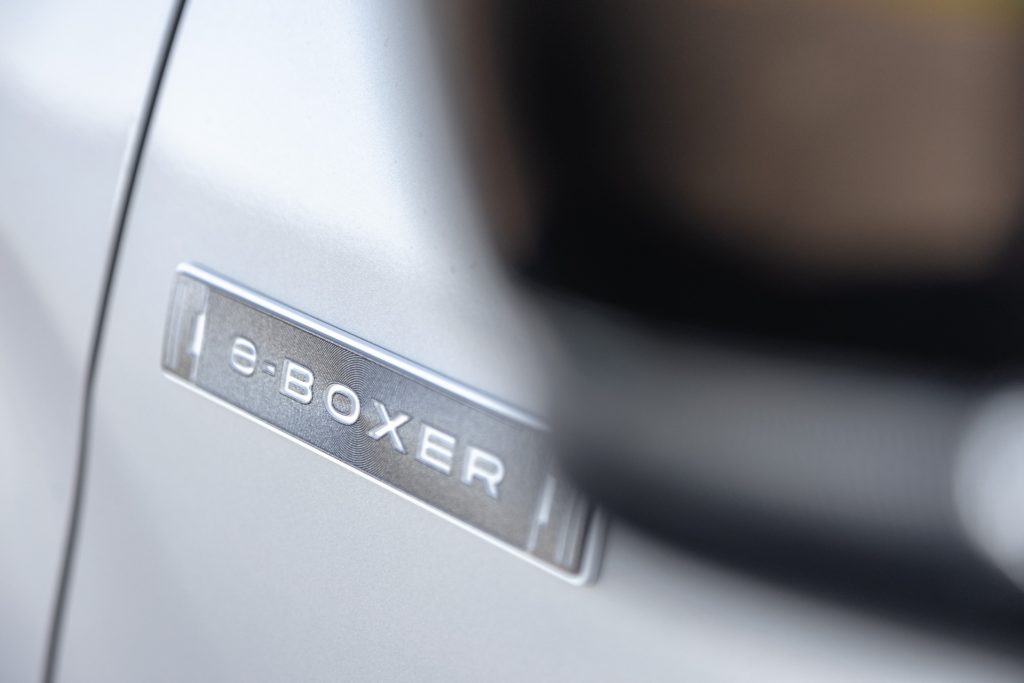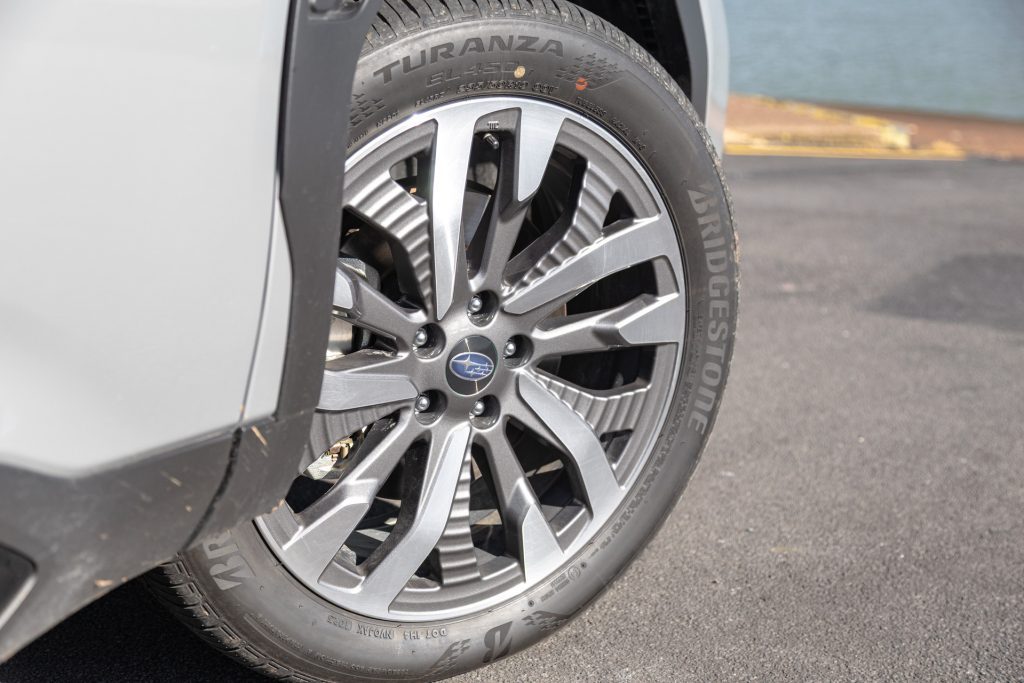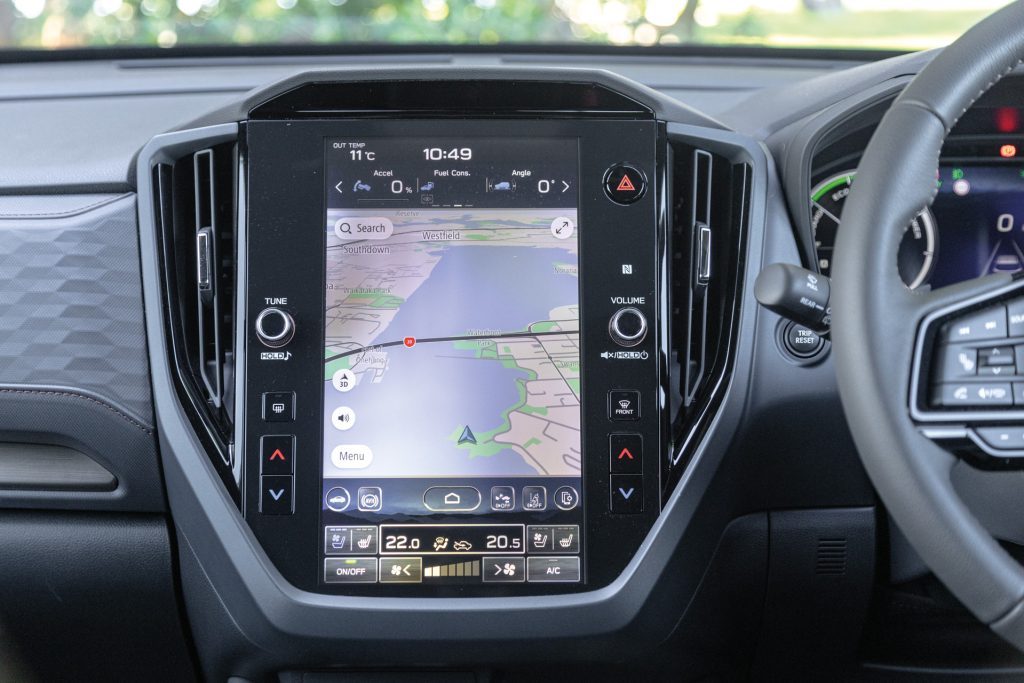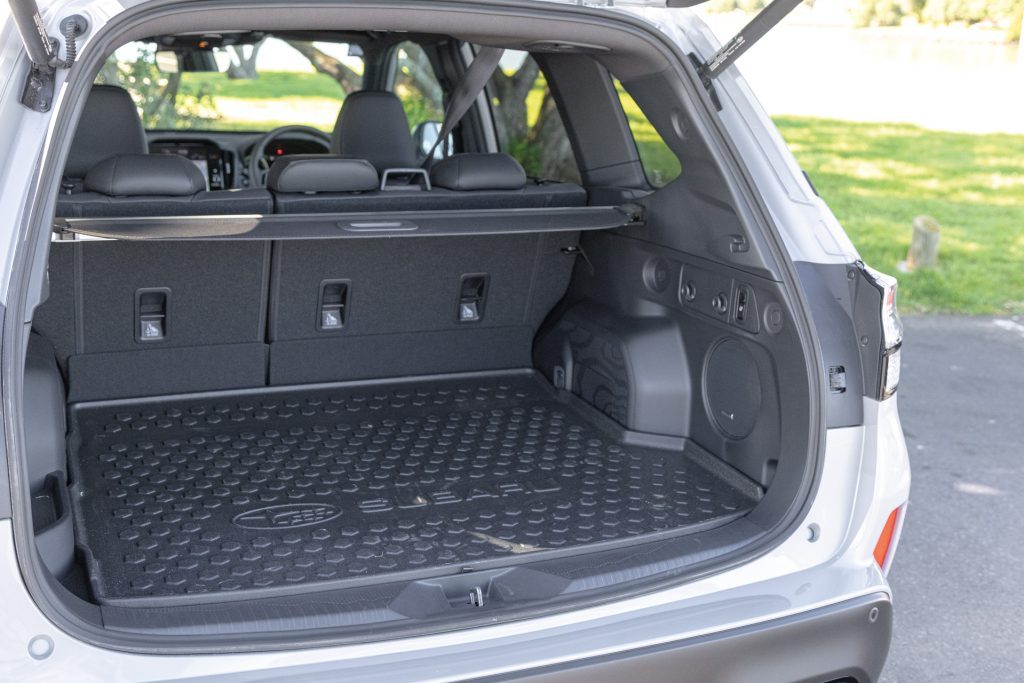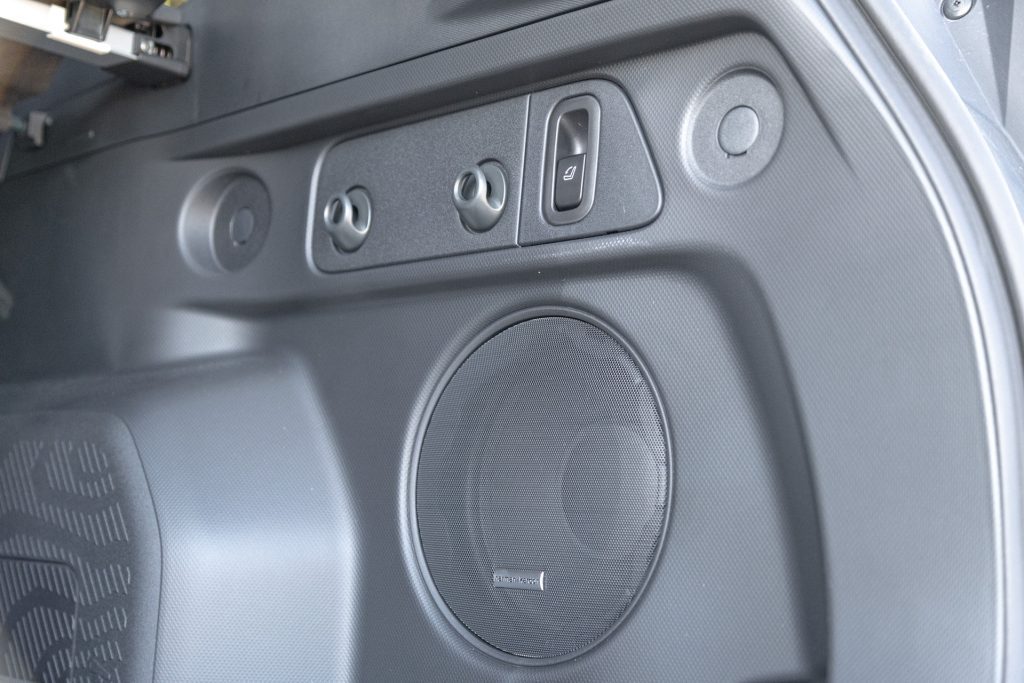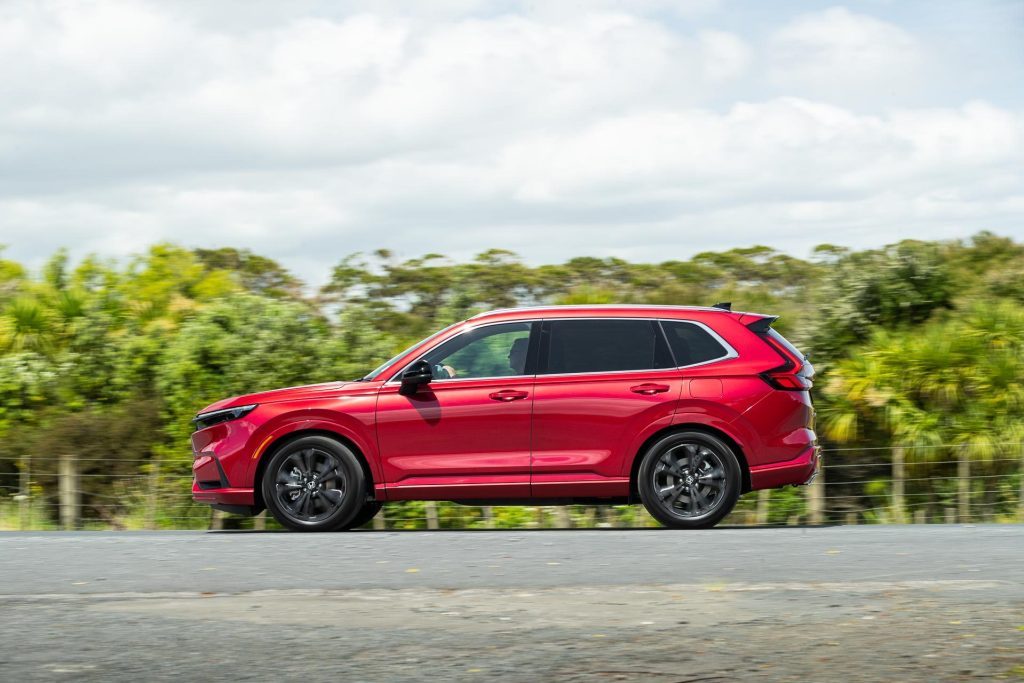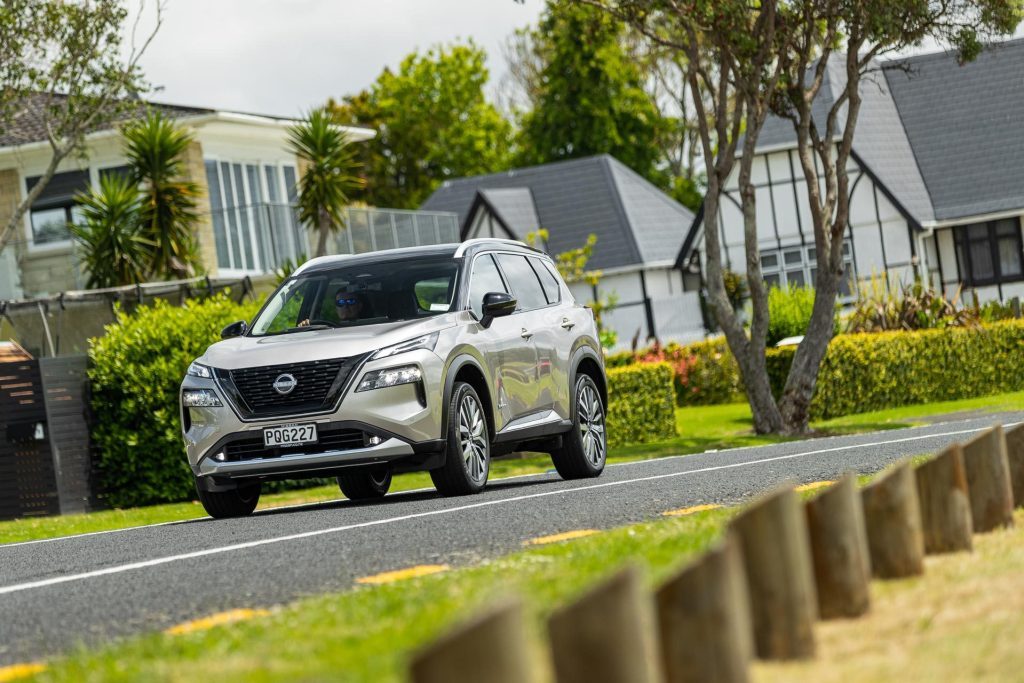2025 Subaru Forester AWD Hybrid Touring Review
Words: Kyle Cassidy | Photos: Alex Schultz
The Forester returns in sixth-generation guise, sporting a new and much improved hybrid set-up. Is it a new benchmark in the competitive family SUV market?
Most manufacturers are now piling in on hybrid power, especially in the family SUV space. Subaru has been there with its Forester but its first attempt received a ‘could do better’ report card.
Now the popular mid-size high-rise wagon is back in its sixth generation, vying for most improved player status thanks to a new hybrid set-up.
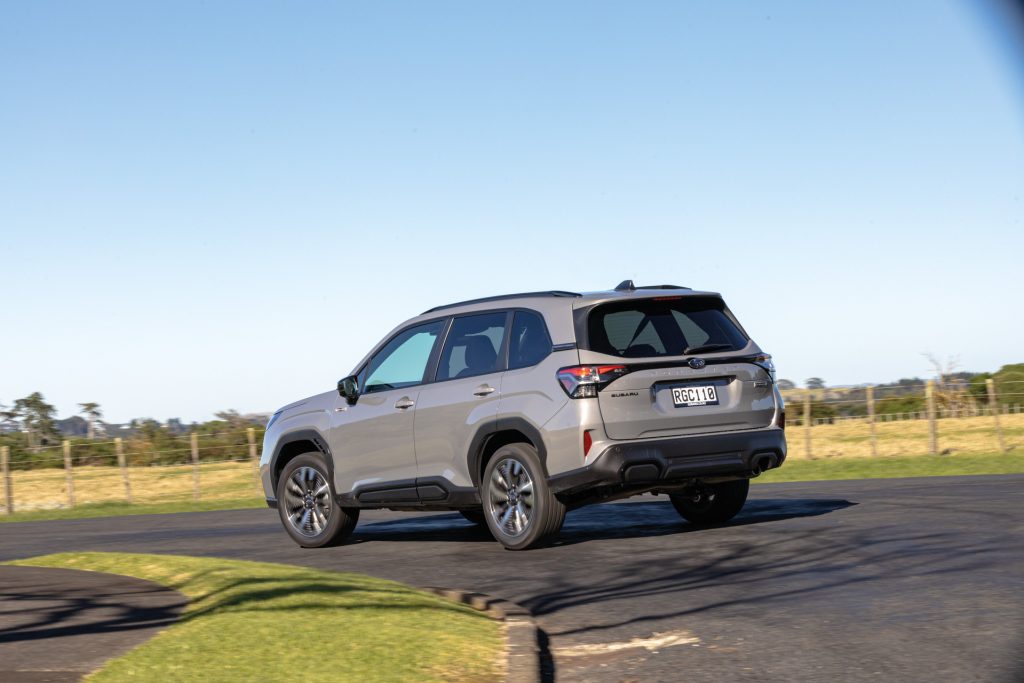
The line-up consists of three model variants, and each is available with either a regular 2.5i boxer four or a hybrid version. It ranges in price from $49,990 for Forester AWD to $60,990 for the range-topping Forester AWD Hybrid Touring.
We suspect most will be more interested to see how the petrol-electric version goes. While it’s more expensive (between $3k and $5k more, depending on the variant) than the 2.5i, it brings a better mix of torque and economy, for improved drivability. We had the Touring hybrid for the past week, so how does it fare?
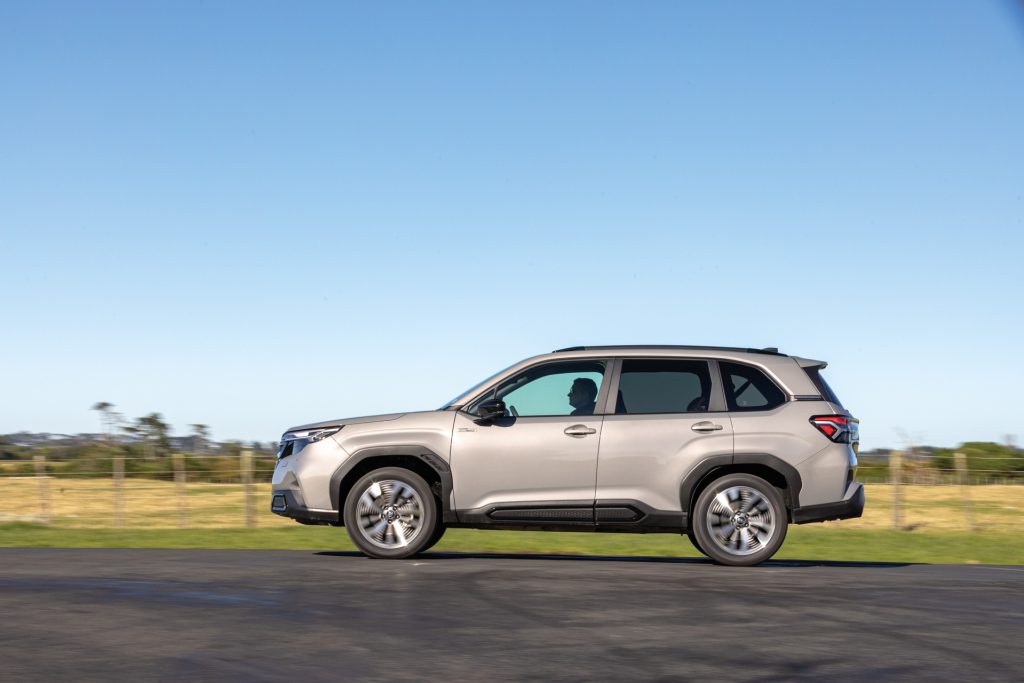
New and improved
While the previous e-boxer was a high-voltage hybrid powertrain, rather than a 48v affair, its overall system performance wasn’t grand. This is much more like it. With a higher voltage system (259V) and larger motor, Subaru has opted to call it a strong hybrid. It uses hybrid components from its technical partner Toyota, pairing them with traditional Subaru traits such as its flat four and permanent all-wheel drive. The 2.5-litre engine breathes via the Atkinson cycle for efficiency so is down on outright power. Where the conventional 2.5i makes 136kW and 247Nm, this one offers 121kW and 212Nm. However, there’s a traction motor living in the transmission housing and so its 90kW/276Nm can be blended into the mix. This is done via a CVT-type box, but not the usual belt-driven version of the regular Forester, rather one with a planetary gearset. And there’s the control unit and motor generator that ensure the system all works seamlessly. It keeps the 1.1kWh battery that lives under the boot floor charged. Subaru rates the overall output at 145kW, which is a decent step up on the 110kW of the old model.
As the hybrid bits drive through the transmission and transfer case, the Forester still has a mechanical AWD system; not as efficient as some e-AWD systems (where a motor alone turns the rear wheels when needed; think RAV4) but superior when you need proper traction. And so Forester still has its off-road bent, designed to go a little further than your average crossover. In that regard, factor on 220mm of ground clearance and X-Mode. This traction control setting provides another level of surefootedness on iffy surfaces like sand and snow.

Bigger, plusher
Forester has a new look, still rather upright, with a large glass house. That’s mainly for practicality reasons and good visibility. It’s a big Forester now, every generation growing in size. That reflects Subaru’s focus on the American market, being its biggest, which influences the chunkier styling that Subaru is pursuing.
Practically speaking, it has wide opening rear doors for easy access. There’s ample leg room for a five seater and good headroom, even with a large sunroof. While they have minimised the transmission hump, it still fouls legroom for anyone caught in the middle position. On that, three adults across is going to be a squeeze. Halflings fit better, seat comfort good despite a lack of a recline function and there are the usual Isofix points for car seats. You might like the inclusion of the Subaru stars on the tread plates in the back, some dog paws on the door trims and a duck on the glass roof. Americans love those easter eggs.
Out back, you’ll find handy luggage space, the hold deep and wide. There’s a smidge less space in the hybrid, capacity rated at 484L, 12 less than the ICE examples on account of the battery beneath. The biggest loss is the spare wheel; there’s only a repair kit. Hopefully that will get you back home when you’re out adventuring. There’s spring-activated split folding, the seat backs dropping down handily. Unless the centre belt is in use. That still hangs from the roof, which is a bit annoying. As for towing, it’s only rated to 1200kg, whereas the 2.5i can haul up to 1800kg.
While a new model, the Subaru faithful will find it all quite familiar up front. It’s fairly traditional, conservative even. There’s Subaru’s generic large portrait-oriented screen on the dash, a logical operator that might not be dazzling or bleeding edge, but works fine (and brings wireless Apple CarPlay and Android Auto connectivity). A few shortcut buttons, like the one to axe the lane keeping, are good, though it could flick between menus more quickly.
The build is solid, the design understated. It’s simple, logical, a few buttons helping operations, a conventional lever selecting the gears. There’s even a button to trip the odo, and a USB-A outlet if you haven’t migrated to USB-C yet. Though there is one of those too, and a charge pad. Digital dials help you mix things up from a driver info perspective, and there’s a multi-view camera system to ease parking missions.
Safe, stable, staid?
The Forester comes with a recent five-star crash rating, meaning it has all the prerequisite minders on board. Most are okay in action, except for the driver monitor system; it’s constantly on your case. There is an obstacle detection system to prevent you crashing into things, but it kept registering the hedge on the driveway as a danger, refusing to allow us to turn around. We either had to turn it off in the menu system, or reverse out. The active cruise control works well in traffic and on the motorway, the assisted drive mode keeping you centred smoothly too.
As to how it goes, as we said, it’s much improved over the previous model. Like they say, it feels strong off the mark, the torque flowing easily, smoothly for a refined drive. Those are the hybrid’s hallmarks, the power delivery is always smooth, aided by a well damped progress and nicely assisted steering. It’s just easy, non-fussed. It will run in engine-off mode under light throttle loads, in slow moving traffic (30-40km/h), and creeping around the car park. But generally the engine is working away most of the time. And to the actual economy, we averaged 7.1L/100km, which is close to the rightcar.govt.nz figure of 6.9, but north of Subaru’s quoted number of 6.2. That’s also more than what we have experienced on test from the Sportage HEV, RAV4 and H6 HEV, although the Kia and Haval were 2WD models, which were hovering around the high fives and mid-sixes.
It’s a happy highway cruiser, the ride absorbent on bumpy byways, and quiet too. A sea of calm, it is collected through the corners, the lumps sorted, roll minimised and understeer trimmed via brake nipping when pressed. The power delivery is more of the on/off variety, like a CVT of old. Being in the S mode doesn’t seem to help much, and neither do the shift paddles. It does kick on when you bury the gas, so overtaking is not an issue.
Worthy?
The top Touring hybrid is around $5k more expensive than the model it replaces, though brings with it a much improved powertrain; smooth, easy and reasonably economical, at least compared with its ICE alternative. Buy Forester for its off-road creds, refinement and general easygoing nature, all wrapped up in a very practical package.
Subaru Forester AWD Hybrid Touring
$60,990 / 6.2L/100km / 140g/km
0-100 km/h 9.7s
Speedo error 98 at an indicated 100km/h
Ambient cabin noise 70.9dB@100km/h
Engine 2498cc / Flat 4 / DI
Max power 121kW@5600rpm
Max torque 212Nm@4000-4400rpm
Motor output 90kW / 276Nm
Battery 1.1kWh
Hybrid System Output 147kW
Drivetrain e-CVT / AWD
Front suspension Mac strut / sway bar
Rear suspension Wishbones / sway bar
Turning circle 10.8m (2.5 turns)
Front brakes Ventilated discs
Rear brakes Discs
Stability systems ABS, ESP, TV
Safety AEB, ACC, BSM, LDW, RCTA, ALK, AHB
Tyre size f/r-235/50R19
Wheelbase 2670mm
L/W/H 4655 / 1830 / 1730mm
Track f-1565mm r-1570mm
Fuel capacity 63L
Luggage capacity 484L / 1162L
Tow rating 750kg (1200kg braked)
Service intervals 12 months / 15,000km
Warranty 3yrs / 100,000km
ANCAP rating ★★★★★ (2024)
Weight (claimed) 1763kg

How does New Forester compare with other top-spec hybrids SUVs?
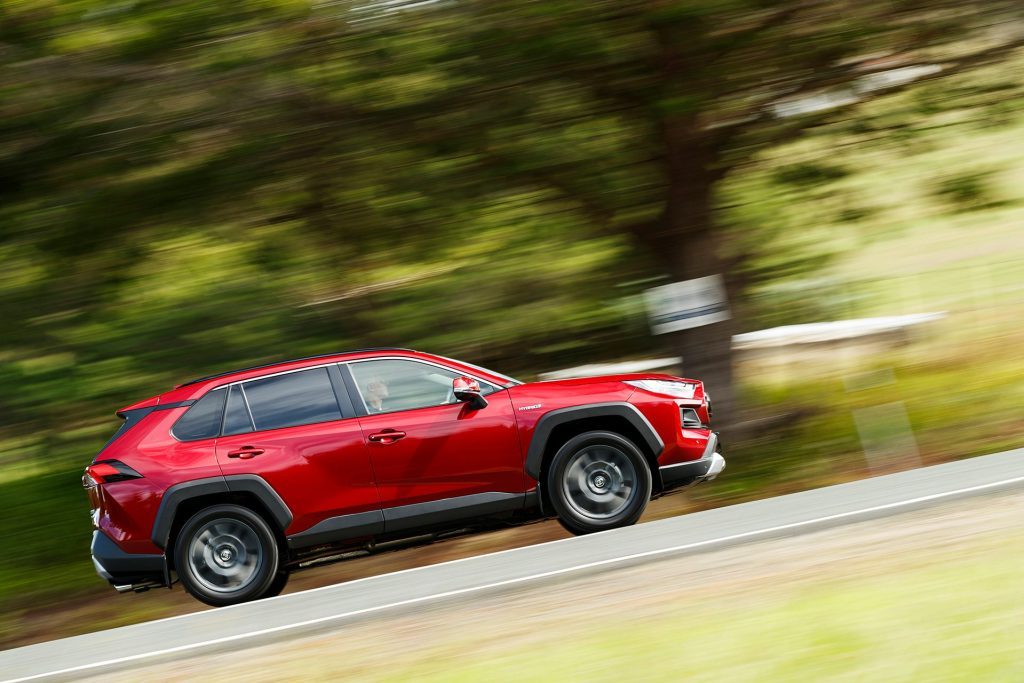
Toyota RAV4 Adventure
Price range $59,990
Total output 163kW
Fuel consumption 5.3L/100km
Transmission e-CVT
Drive Parallel hybrid – e-AWD
Weight 1760kg
Luggage capacity 542L
Towing 1500kg
Warranty 5yrs/150,000km
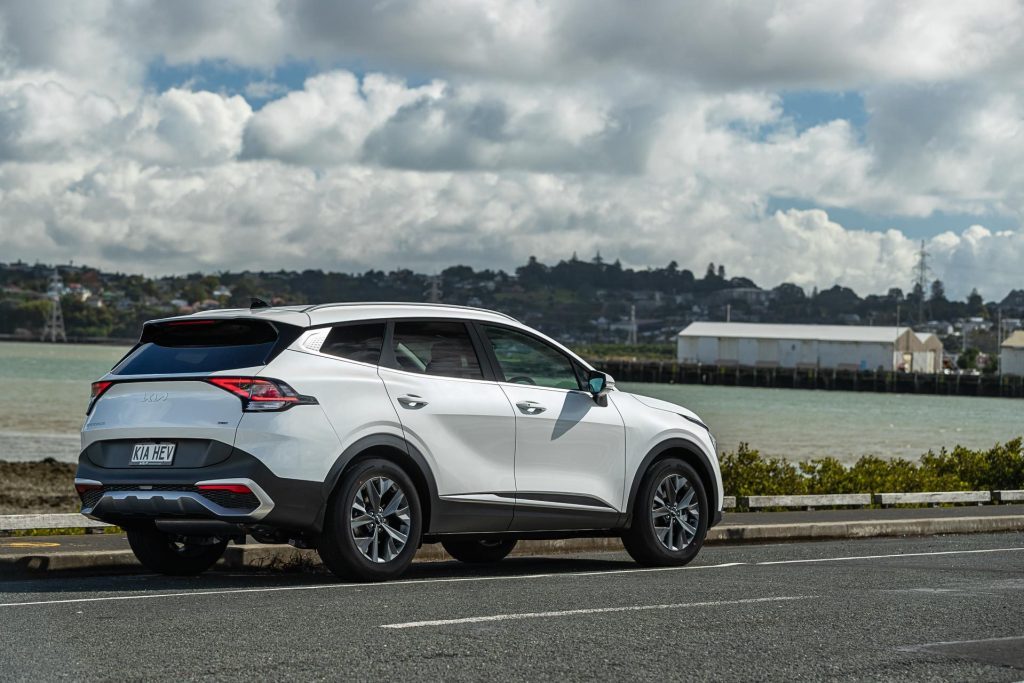
Kia Sportage HEV X-Line AWD
Price $64,990
Total output 173kW
Fuel consumption 5.9L/100km
Transmission 6-speed auto
Drive Parallel hybrid – AWD
Weight 1762kg
Luggage capacity 586L
Towing 1900kg
Warranty 5yrs/150,000km

Haval H6 HEV Ultra
Price $45,990
Total output 179kW
Fuel consumption 5.8L/100km
Transmission 9-speed dual-clutch
Drive Parallel hybrid – FWD
Weight 1720kg
Luggage capacity 560L
Towing 1500kg
Warranty 7yrs/unlimited


